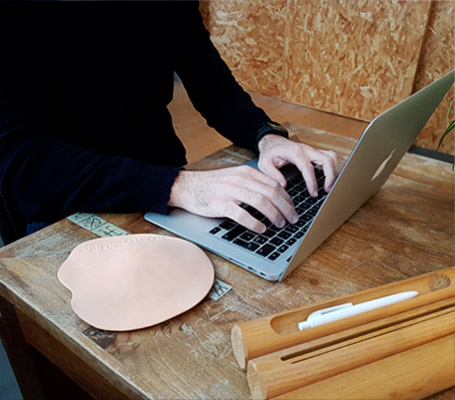The custom-made 3D implants allow me to tailor the surgical plan to each specific patient according to their body morphology. The strength of high-resolution 3D imaging combined with millimetric implant customization is a powerful combination and ensures the highest care possible for the treatment of thoracic cage deformities.
Dr Karl Waked (Brussels)
I’ve used 3D implants for a wide range of conditions, mostly Pectus Excavatum, Poland Syndrome, chest deformities. And I find it particularly useful to give specific correction for each patient. Because the implants are designed based on a CT scan, they give the best possible fit to the anatomy of the patient. Compared to the old way to create custom made implants based on an external mold, this 3D one is more accurate. In terms of procedure, it is usually easy to perform and the recovery has no major issue. Overall my patients were happy with the outcomes.
Dr Omar Tillo, London (United Kingdom)
The use of 3D computer modelled implants in Poland Syndrome is a big step forward. It is definitively a much more accurate technique, it is simpler, it is more time efficient, and overall it is cost efficient.
Mr Stephen McCulley, plastic surgeon, Nottingham
Implants have got good long term outcomes, it is quite cost effective as it is a day case. Patients do not feel the implant after a period of time, they think it is just part of their chest wall. They are very happy, so that’s good for us when they come back smiling.
Prof. Karen Redmond, thoracic surgeon, PectusCheck (Ireland)
The interest of the implant technique is to perfectly answer the withdrawal symptom caused by a Pectus excavatum, a Poland syndrome or an atrophy of upper/lower limb. What I like in this technique, is that the implant is for life and also the simplicity of the surgery.
Prof. Véronique Duquennoy-Martinot, plastic surgeon, University Hospital of Lille
I never had any dissatisfied patients. Out of thirty patients, on a scale of 1 to 10, they are overall between 7 and 9. If we could remove the scar, I think everyone would be 10! The technique meets their main demand : to eliminate the deformity at the origin of their complex since adolescence, with as little risk and recurrence as possible.
Pr Christian Herlin, CHRU Lapeyronie (France)
The interest is first to perfectly compensate the deficiency due to Poland Syndrome. What I like is the simplicity of the procedure and that the implant is definitive.
Pr Véronique Duquennoy - Martinot, CHRU de Lille (France)
This is a very easy technique for treating Poland Syndrome. Thanks to 3D measurement, we can really have a perfect volume for the patient, which does not move in time. The result is almost immediate.
Dr Vincent Nguyen (Paris)
We now have performed two implantations in one male and one female patient. I was very happy with the support from AnatomikModeling. The results were as good as expected and our patients were very happy. I really appreciate getting these fantastic results with this safe and efficient technique and therefore having happy and satisfied patients. Especially our second female patient was extremely happy.
Kay-Hendrik Busch, M.D, Bonn University Hospital (Germany)
The option of making custom-made anatomical implants based on a CBCT has heralded a radical change in the solution of problems such as pectus excavatum or the absence of pectoral muscles, that up to now has only been possible using more complex techniques involving greater complications. The Implant allows for perfectly-fitted and much finer correction than with traditional external moulds. Patients experience much better results.
MD Jesús Benito Ruiz, Antiaging Group Barcelona (Spain)
The custom-made implant is a real comfort for patients suffering from Poland Syndrome. It enables a noticeable improvement of the defect with a very minimally invasive surgery not really painful.
Pr Julien Pauchot, CHU de Besançon


